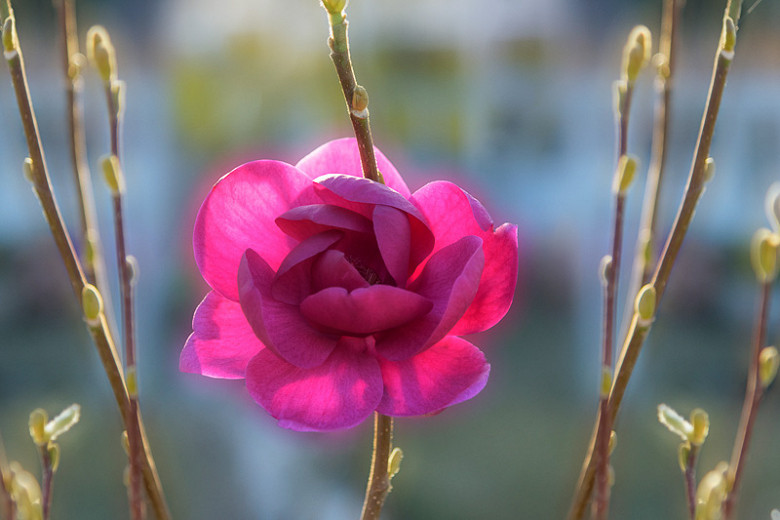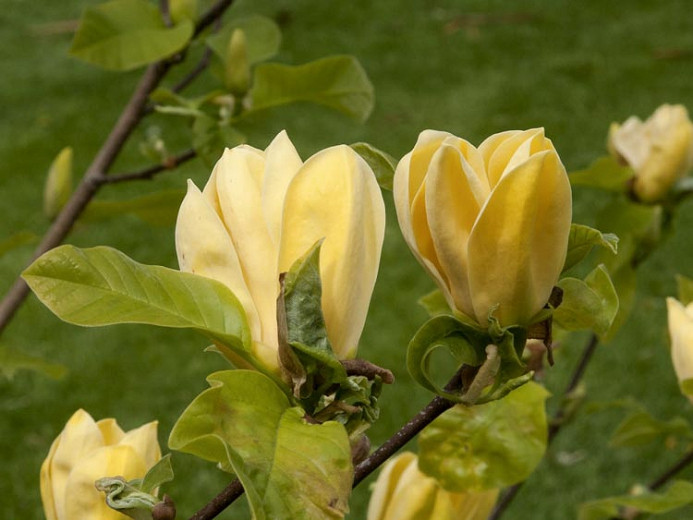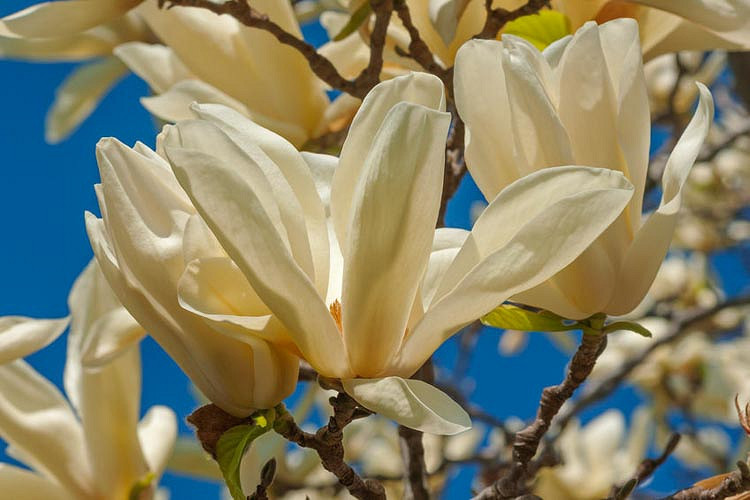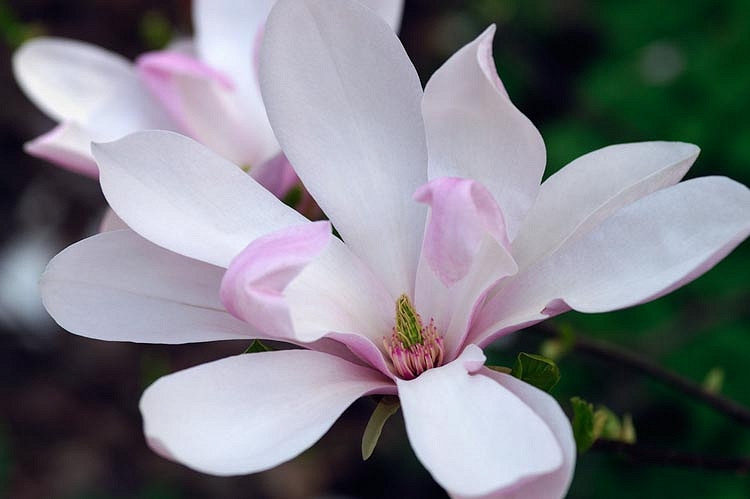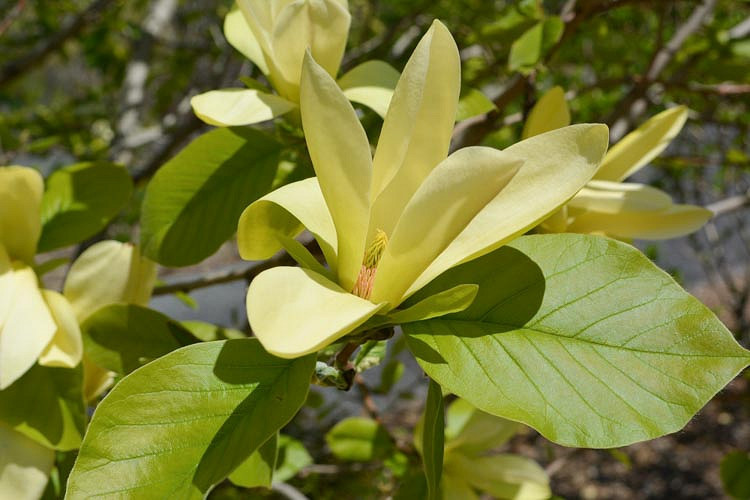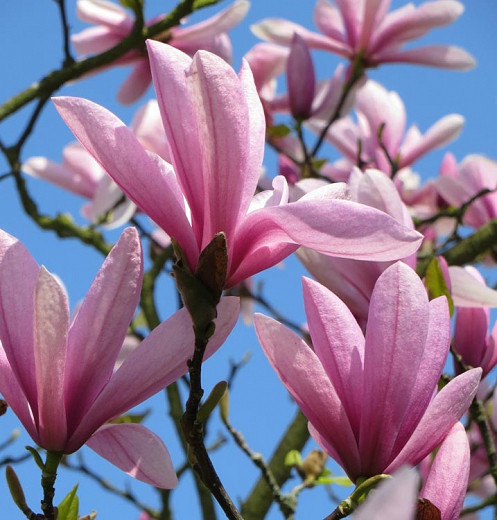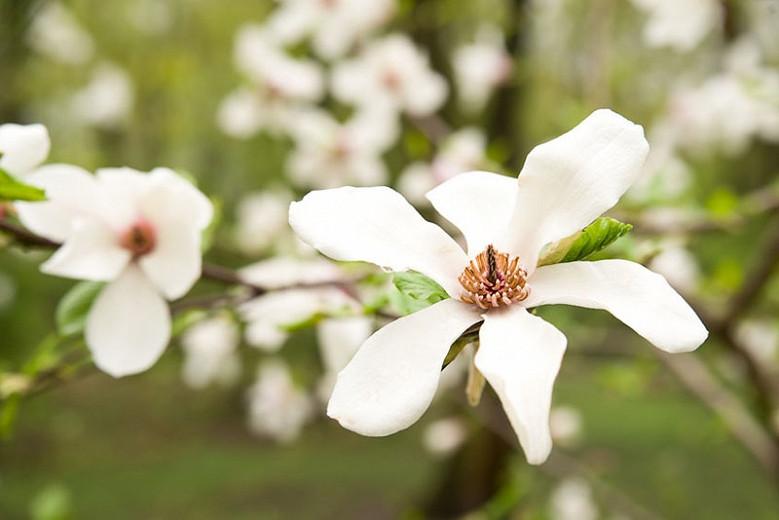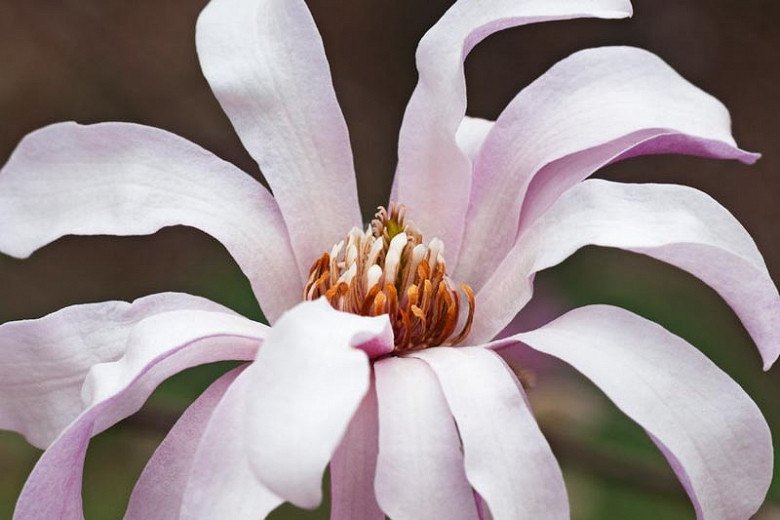Magnolia Black Tulip
One of the darkest purple Magnolias, 'Black Tulip' is an elegant deciduous shrub or small tree with fragrant, deep burgundy, tulip-shaped flowers. Blooming in early spring before the foliage emerges, the magnificent, goblet-shaped blossoms are opulent, large, 6 in. across (15 cm), heavily-textured and create one of the most beautiful sights when in bloom. This Magnolia flowers over a long period and may experience a second flush of blooms in midsummer if temperatures are kept cool and moisture is adequate. The foliage of obovate leaves is dark green and up to 8 in. in length (20 cm). 'Black Tulip' makes an excellent small specimen tree, can be topped to form a hedge, and works well in large containers. Bred in New Zealand, this hybrid Magnolia is the result of a cross between Magnolia 'Vulcan' and Magnolia 'Iolanthe'.
- Grows with an upright habit up to 15-20 ft. tall (5-6 m) and 6-10 ft. wide (2-3 m)
- Full sun to part shade lover, this plant is best grown in consistently moist, slightly acidic, organically rich, well-drained soils. Neutral to slightly alkaline soils are also suitable for growth if the soil is moisture retentive. Magnolias are adaptable to clay, loam, or sandy soils, but most grow poorly in wet or poorly drained soils. Provide a site sheltered from cold, dry winds as buds and flowers may be damaged by cold winds. Late frosts may damage flower buds too.
- May be attacked by scale insects, coral spot, honey fungus, and phytophthora root rot.
- Spectacular as a specimen plant for dramatic early spring blooms. Great flowering tree for city gardens or cottage gardens.
- Magnolia pruning should be carried out in midsummer when in full leaf
- Deciduous Magnolias are best planted when dormant, in late fall or winter in warmer climates and early spring in cold climates. Evergreen magnolias are best planted in early spring. For the first 6 to 12 months after planting, both types will benefit from mulch and regular irrigation during warm or dry weather.
- Propagate by softwood cuttings in spring or early summer, or semi-ripe cuttings in late summer and fall
Requirements
| Hardiness | 5 – 9 |
|---|---|
| Heat Zones | 5 – 9 |
| Climate Zones | 2B, 3, 3A, 3B, 4, 5, 6, 7, 8, 9, 14, 15, 16, 17, 18, 19, 20, 21, 22, 23, 24 |
| Plant Type | Shrubs, Trees |
| Plant Family | Magnolia |
| Exposure | Full Sun, Partial Sun |
| Season of Interest | Spring (Early) |
| Height | 15' – 20' (4.5m – 6m) |
| Spread | 6' – 10' (180cm – 3m) |
| Water Needs | Average |
| Maintenance | Low |
| Soil Type | Clay, Loam, Sand |
| Soil pH | Acid, Alkaline, Neutral |
| Soil Drainage | Moist but Well-Drained |
| Characteristics | Cut Flowers, Fragrant, Showy |
| Tolerance | Clay Soil |
| Attracts | Birds, Butterflies |
| Garden Uses | Beds and Borders, Patio and Containers |
| Garden Styles | City and Courtyard, Informal and Cottage, Traditional Garden |
